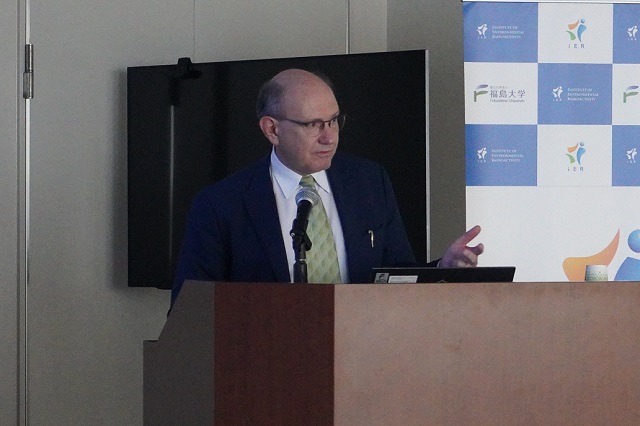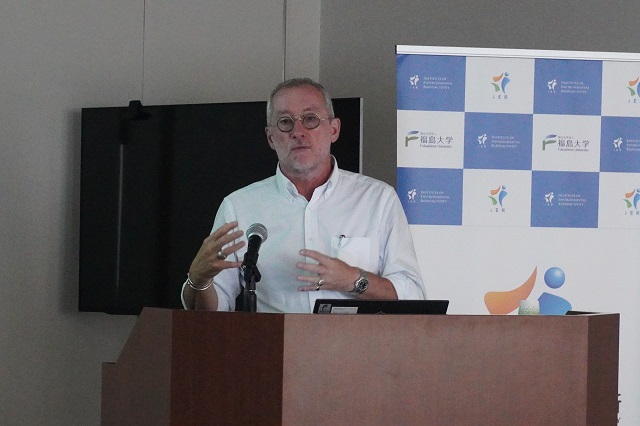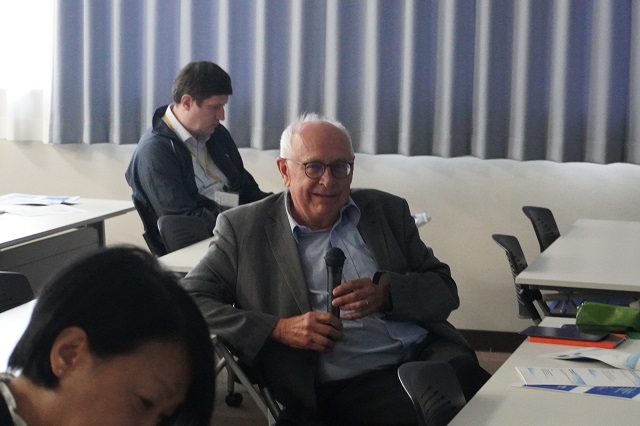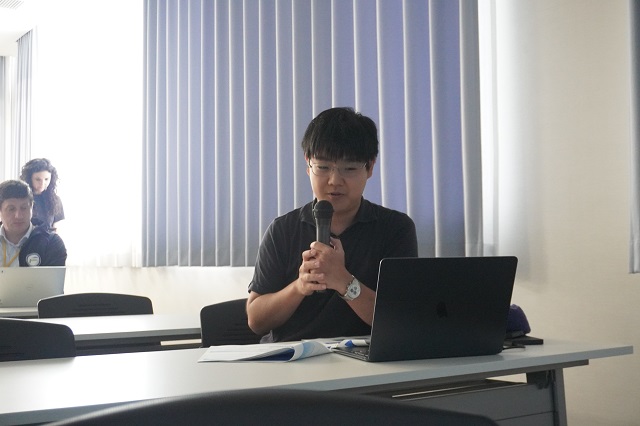July 7, 2025, we held an IER Special Seminar (IAEA Seminar). <Mr. Miroslav PINAK, Mr. Gerard BRUNO>
| Date & Time | Mon. July 7, 2025, 13:30-16:00 JST |
| Venue | 6F Conference room, Main Bldg. IER/Online (Zoom) |
| Guest Speakers | Mr. Miroslav PINAK, Head, Radiation Safety and Monitoring Section, IAEA Mr. Gerard BRUNO, Head of the Radioactive Waste and Spent Fuel Management unit, IAEA (Presentation order) |
| Lecture Titles | Fukushima Prefecture and IAEA Cooperation on Revitalization after TEPCO Fukushima Dai-Ichi Nuclear Power Station Accident (PINAK) Radioactive Waste Management (BRUNO) |
| Participants | 40 |
On Monday, July 7, 2025, an IER Special Seminar (IAEA Seminar) was held, featuring Mr. Miroslav PINAK and Mr. Gerard BRUNO, experts from the International Atomic Energy Agency (IAEA). Approximately 40 participants, including government officials, researchers, and graduate students, attended the event, both in person and online.
The seminar was held at the IER as one of a series of lectures conducted by IAEA experts at universities and other institutions in Fukushima Prefecture, based on the agreement between the IAEA and the prefectural government. Prior to the lectures, opening remarks were delivered by Director Gunji of Fukushima Prefectural Centre for Environmental Creation and Director Tanaka of International Nuclear Energy Cooperation Division, Ministry of Foreign Affairs.
First, Mr. Pinak introduced an overview of the cooperation between Fukushima Prefecture and the IAEA. He stated that, following the accident at the Fukushima Daiichi Nuclear Power Plant, the IAEA has provided technical support, advice, and other forms of assistance regarding measures related to decontamination, management of removed soil, safety management of workers, residents’ health, and so forth, under the cooperation with Fukushima Prefecture. He also mentioned that the IAEA began delivering lectures at universities and other institutions in Fukushima Prefecture last year, including one at Fukushima University that was conducted with consecutive interpretation. He added that lectures are scheduled at multiple institutions in the summer of 2025, and that today’s lecture at the IER on July 7th marks the first of this summer. The lecture at the IER was conducted in English without interpretation, as the lectures at the graduate school are typically given in English.
Next, Mr. Bruno gave a lecture on ‘Radioactive Waste Management,’ where he explained that radioactive waste, as a general concept, is classified into several categories based on radioactive content (levels and decay period). He described that, for each category, necessary treatments such as volume reduction, solidification, and immobilization are carried out using appropriate methods and facilities, after which the waste is safely stored through isolation and containment. He also introduced the removed soil and other materials generated in Fukushima. He mentioned that, considering its characteristics, radiocesium is the only radionuclide requiring long-term management. While its containment can be readily achieved, appropriate isolation and shielding are necessary to protect against external exposure.
After the lecture, lively questions were raised by the students, and it was discussed that a major challenge in promoting the recycling and reuse of removed soil is to gain broad understanding among residents and other stakeholders. Additionally, there was an explanation regarding the disposal of conventional spent nuclear waste. We believe that this lecture provided an opportunity to learn about a systematic approach to radioactive waste management and its application to removed soil.
This fiscal year, we are currently coordinating with Fukushima Prefecture to hold a seminar in December. The next lecture is planned to be on risk communication.




